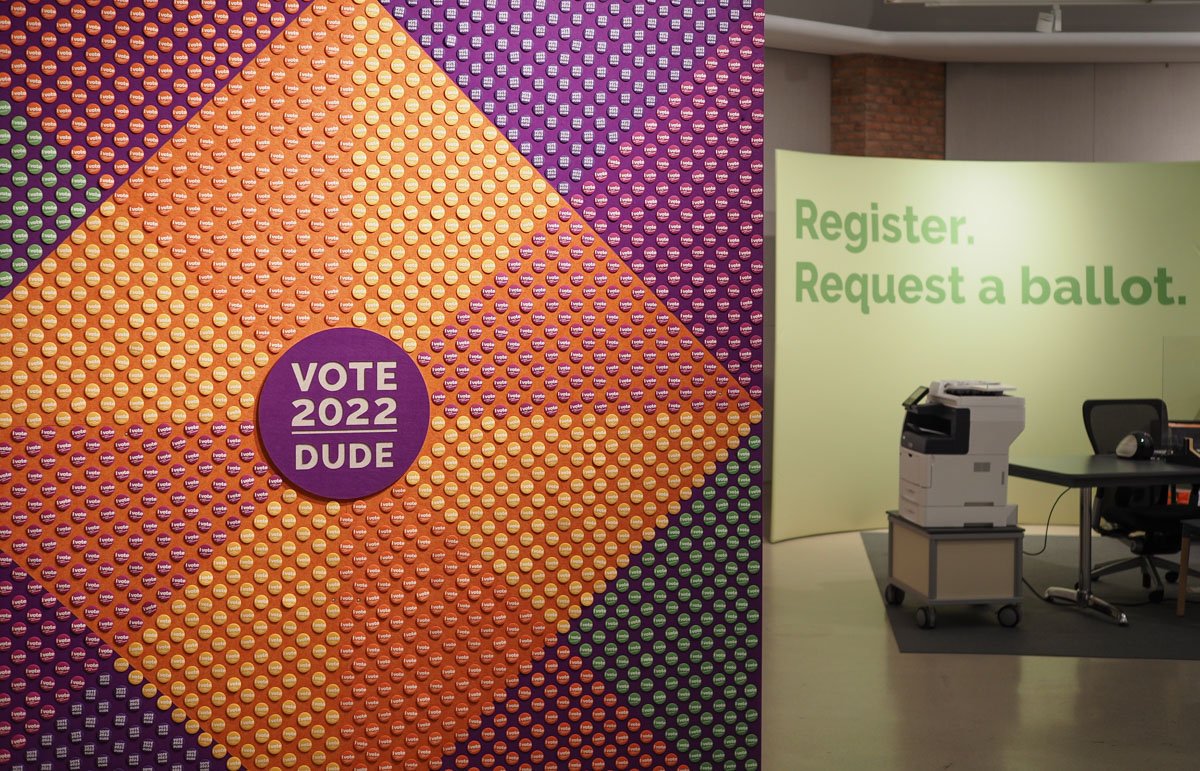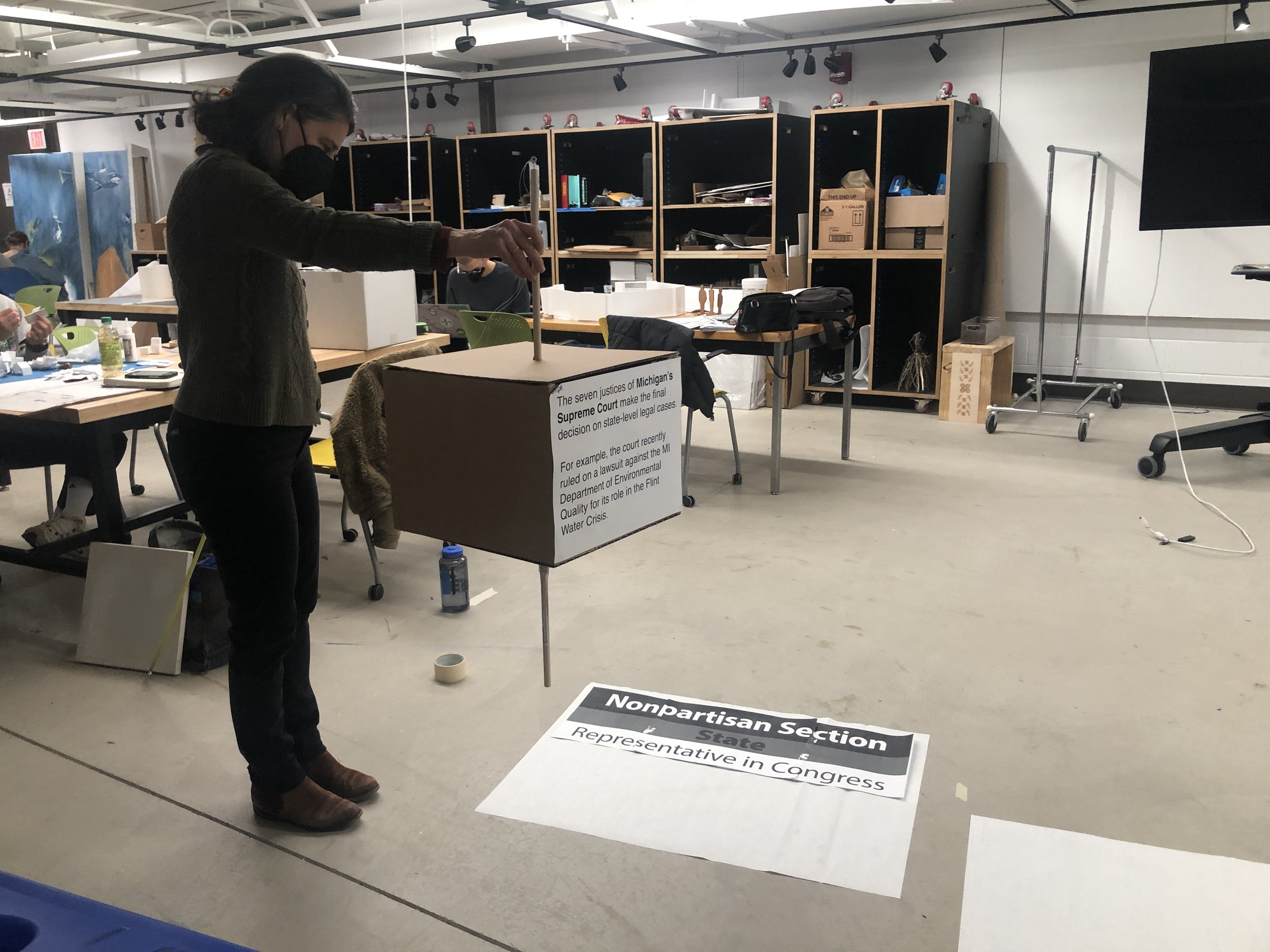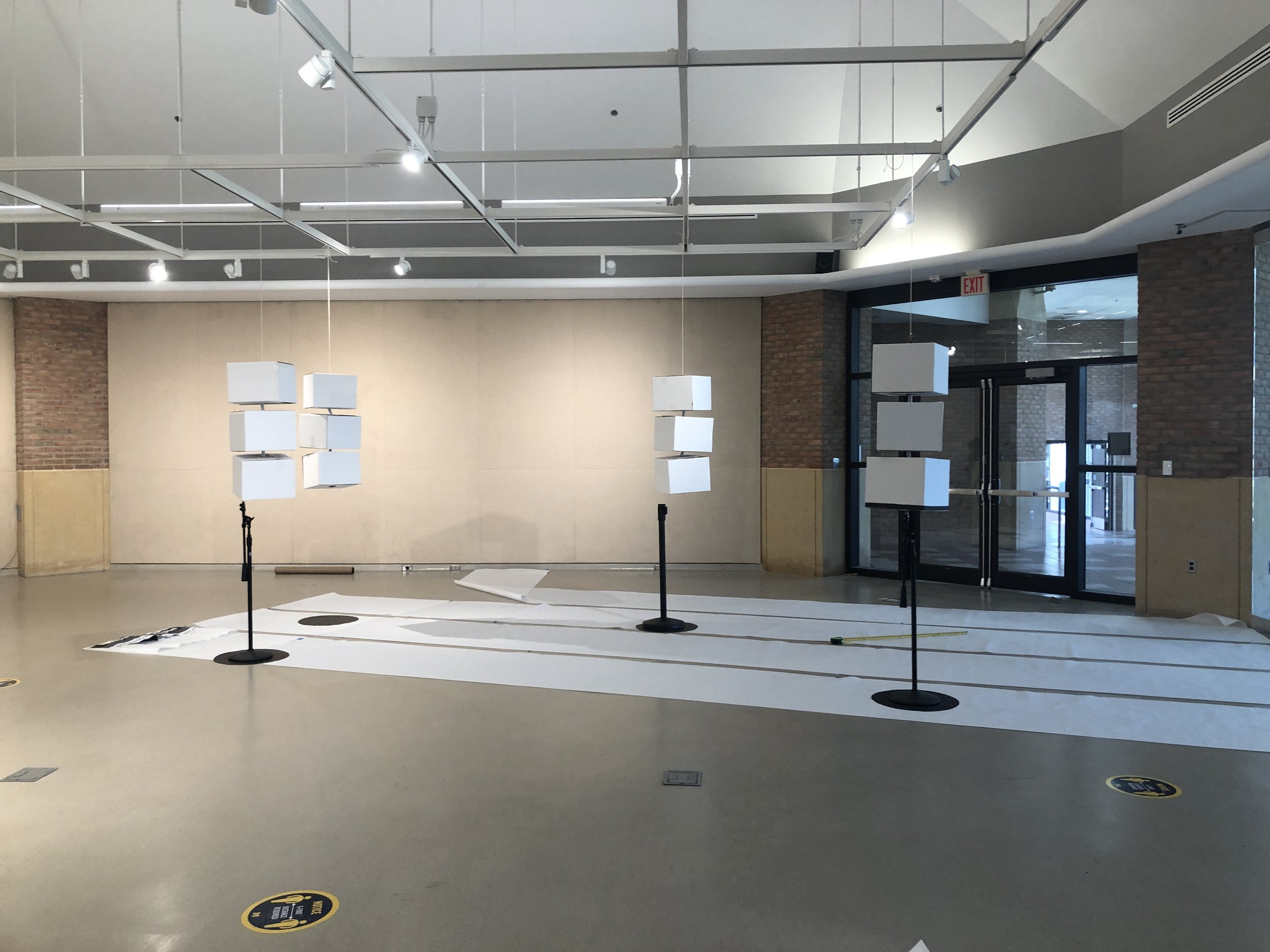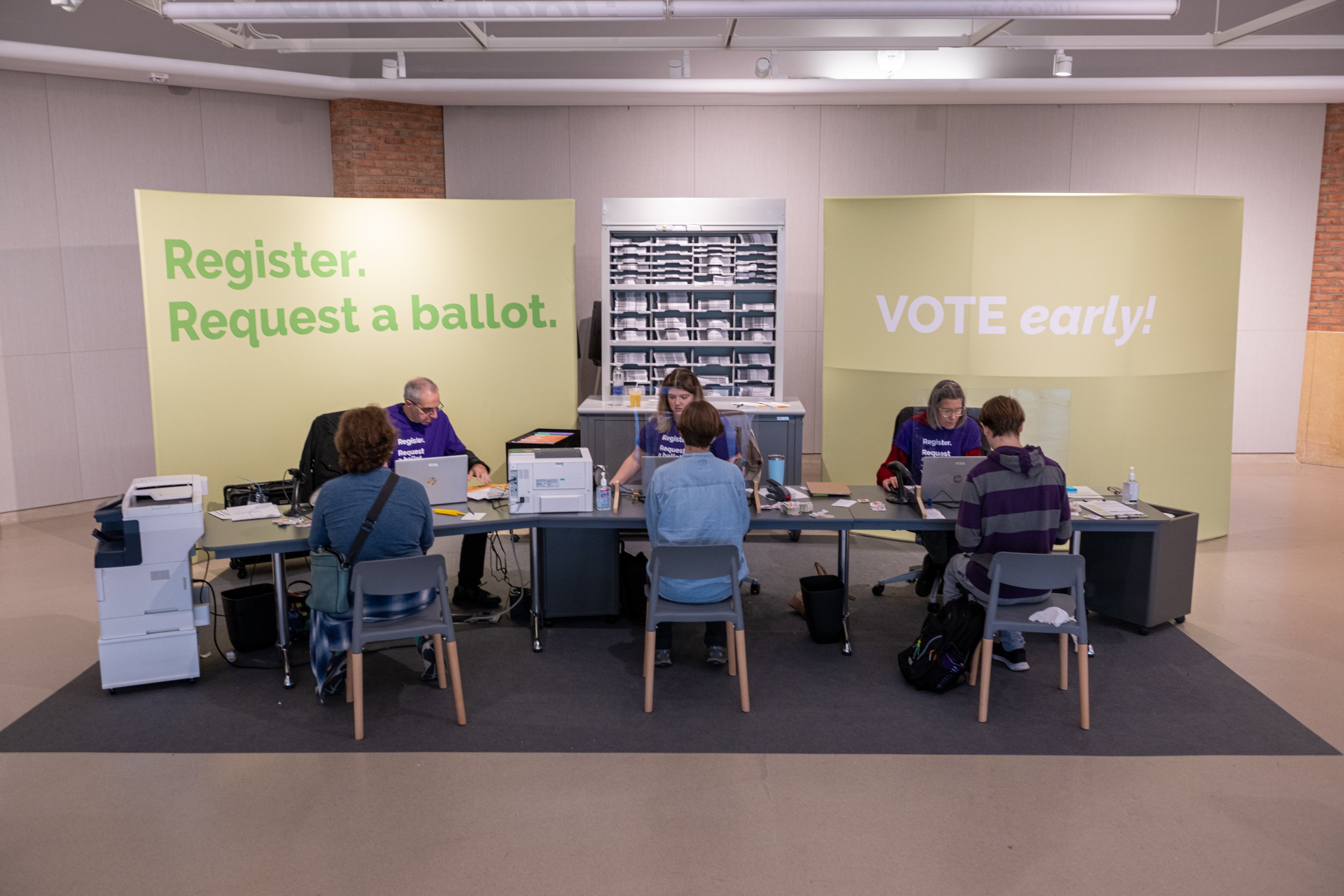Duderstadt Voting Exhibit
2021 — 2022
Environmental Graphic Design
Spatial / Exhibit Design
Socially Engaged Design
An interactive civic space designed to help students register to vote, request their ballots, research, and vote early.
From the Fall of 2021 through the Fall of 2022, I collaborated with a team of designers and researchers as part of the Creative Campus Voting Project to design and launch two satellite city clerk’s offices on the University of Michigan’s Ann Arbor campus, allowing students to register to vote, receive their ballots, and conduct ballot research to better understand issues relevant to Michigan’s 2022 midterm election. The project resulted in two interactive voting spaces run by the Ann Arbor City Clerks as well as a trained cohort of UMICH voting fellows.
To view the second voting installation we designed, click here.
A Grounding in Exhibition Design
The project began as a follow-up to the work done by UM faculty members Hannah Smotrich & Stephanie Rowden, founders of the Creative Campus Voting Project, when they teamed together for the 2020 election to create a satellite city clerk’s office, situated within the University of Michigan Museum of Art, or UMMA.
In the fall of 2021, I was a student in Hannah’s exhibitiion design course and our semester-long work focused around generating ideas for their next exhibition in 2022.
In that class, I found myself interested in how to make the spaces feel playful and inviting, as well as how to decode the complex information hidden between the lines on our ballots and help educate students, and make relevant, the nuanced roles of office positions.
This exploration became the seed that grew into our Ballot Wayfinder Installation.
Click here to view my exhibition design process blog.
An Interdisciplinary Research and Design Team
Not quite satisfied with the ambiguous termination of the work at the semester end and having discovered a passion for working on a design project that combined the two- three- and four-dimensional realms of space, I embarked on an independent study with Hannah and Stephanie for the Winter 2022 term. We recruited and formed a small team of artists, designers, and researchers, and hit the ground running with the ideas brought up in our fall experience.
As time progressed, we got more and more concrete with our ideas. It was a massive undertaking for such a small team of people — it stretched us in all sorts of ways — but resulted in a tremendous learning experience.
One of the most valuable parts of working on this project was both seeing how many different techniques of design exploration can be utilized in harmony — small-scale modeling, bodystorming, print-tests, digital mockups, color play — and learning how to work through a design project for myself, understanding when to change gears and dissect a problem from a different perspective with a different set of tools.
The Space
The installation was located in the Duderstadt Gallery, a 35’x35’ octogonal gallery space situated within the University of Michigan’s Duderstadt Center on North Campus.
The gallery sits along a hallway that connects the library and Pierpont Commons, a popular gathering place for eating, studying, lounging, and shopping.
The gallery’s floor to ceiling glass outward-facing wall that could be opened fully fostered a welcoming and inviting visual tone and enabled visibility during closed hours.
Welcome Area
The first stop in our anticipated voter’s journey was the Welcome Area. Located near the gallery entrance, we designed this space to invite someone into the experience, orient them to the exhibit, and help them make a decision about where they would like to vote.
A peer mentor was positioned here to provide a helping hand and a warm, human welcome. Clipboards with custom-designed registration forms further simplified the process and were handed to students who wanted to register and vote in Ann Arbor. Environmental signage with QR codes connected those wishing to vote out-of-state or in their home Michigan district to the relevant registration information.



Ballot Wayfinder
One of our main goals of the project was to make the information, and midterm election itself, relevant for students. We decoded the information in a system that demonstrated how the positions up for election in 2022 influence the more tangible issues students care about such as reproductive rights, the environment, and criminal justice
Another equally important goal was to make the experience as playful and welcoming as possible. Knowing that voting can be perceived as an intimidating process for first time voters, we sought to invoke a sense of delight and comfort in every interaction.
Through research, we learned that relevancy is the key to making the information salient and impactful for student-voters. Thus, a huge part of our work was finding a way to connect the offices up for election with the issues that students care about, from the environment to LGBTQ+ rights. A member of our team spent a lot of time vetting this information with local experts and perfecting the language with a clear, concise, and non-partisan tone-of-voice. I designed the graphics for each of our cubes, thinking carefully about information hierarchy and visual tone.
If you’re interested in reading through all of the cubes, click here!
Judicial Section
We used a conversational, cheeky tone-of-voice along with architectural felt to create a three-dimensional infographic that simplifed judicial section ballot information and highlighted the most salient details.
Proposal & Research Area
After journeying through the information-heavy Ballot Wayfinder, we wanted to give people a chance to rest, sit with the information and perhaps jot down notes and research further.
We included a short and sweet section on the proposals, a table area, and links to well-researched, non-partisan sources for further research.





Satellite City Clerk’s Office
Of course, a large part of our experience design included the pop-up City Clerk’s office that was situated within the gallery. This stop along one’s voter journey allowed students to sit down with Ann Arbor Clerks and complete their registration process. We sought to give this moment of the experience the necessary space and privacy, providing a comfortable experience for students and clerks alike.
Celebration Area
Not wanting the moment to feel anti-climatic, especially for first-time voters, and wanting a visual “pop", we created the celebration area to mark the moment and serve as a final reflective point on someone’s journey through the space.





























